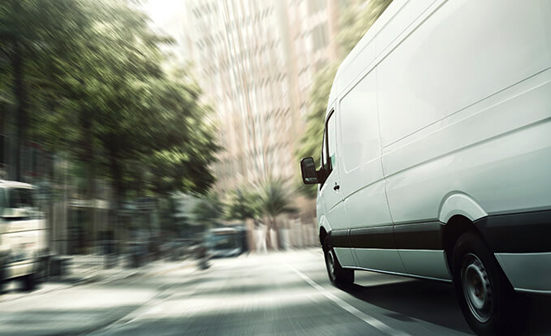Ants show how to reduce congestion in cities
- August 4, 2020
- Steve Rogerson

Fleets of commercial vehicles that operate in large towns and cities could halve their emissions and better meet clean air targets by imitating how ants share knowledge, according to researchers at Aston University in the UK.
The technology imitates how ants share knowledge, scaling them up to real world problems such as optimising routes around busy cities.
The software, which has been developed and tested by computer scientists at Aston University in Birmingham was part-funded by the European Regional Development Fund and uses a method called route optimisation to direct fleets of vehicles from the same company intelligently around a city or town, halving vehicle emissions while saving them time and fuel costs.
The researchers based their computer modelling algorithm on the way ants forage for food to schedule tasks to vehicles in a fleet and optimise their routes. The software can be installed on a laptop and business owners can then use the system to optimise their own routes based on their daily needs.
The ability to optimise routes of fleets of commercial vehicles is significant because it will enable cities and towns to move towards addressing their clean air targets and offer an alternative measure to establishing clean air zones.
With global demand for home deliveries due to Covid-19, the number of deliveries being made daily by drivers has surged, resulting in an increase in fleets of vehicles on roads. For example, according to Royal Mail, 45% of adults in the UK were now receiving more parcel deliveries, while the BBC reported that 3.5 million vegetable boxes were delivered in two months during lockdown in the UK.
The research team used a technique known as meta-heuristic technology. The method mimics how colonies of ants solve problems and improve upon their existing behaviour. For example, each ant keeps a record of what it has found and passes on this knowledge to other ants. This best practice then permeates throughout the colony, updating its store of know-how in a way comparable with computer algorithms.
The researchers further developed the technique by creating smarter ant algorithms by reducing the amount of decisions they make such that they can solve city-scale fleet routing problems.
“Algorithms based on the foraging behaviour of ants have long been used to solve vehicle routing problems, but now we have found how to scale these up to city-size fleets operating over several weeks in much less time than before,” said Darren Chitty, lead researcher at Aston University. “It means much larger fleet optimisation problems can be tackled within reasonable timescales using software a user can put on their laptop.”
The route optimisation technology was tested on several Birmingham companies that operate fleets of vehicles to help them reduce their road usage. For example, a company that performs external maintenance tasks at customers’ properties can spend a considerable part of the day criss-crossing the city’s road network, thus contributing to high levels of air pollution through vehicle emissions and adding to congestion.
Tests with the maintenance company comprised up to 45 vehicles and 437 customer jobs over a six-week period. The company observed savings of over 50 per cent over its original time spent on the road. This enabled the maintenance company to make equivalent savings in fuel costs, boost profit margins and cut vehicle emissions in half.
“We feel that while clean air zones will improve air quality for some residents, there could be better ways to tackle the health and environmental problems caused by emissions,” said Chitty. “Instead of taxing commercial vehicles to enter these zones, our research can act as an incentive to companies as they will not only reduce emissions but also save money. If all companies in a city operated with this technology, then emissions from these vehicles – which are some of the most polluting – could be significantly reduced, improving air quality for all concerned.”
The scientists were able to reduce CO2 emissions by 4.25kg per van per day and reduce more harmful emissions such as nitrous oxide by 98g per van per day from a fleet of vehicles tested in Birmingham.
The improved schedules were able to service all the required customer demand but with fewer vehicles. This came as a direct result of better routing, saving time for the fleet, but also taking some vehicles off the road altogether, reducing traffic and congestion.
The researchers are now looking to roll out the technology further by testing the system with different types of vehicle fleets such as larger vans or HGVs, as well as larger fleets of vehicles. The team will continue to approach other companies to use as testbeds for the technology as the project is funded for another two years.





